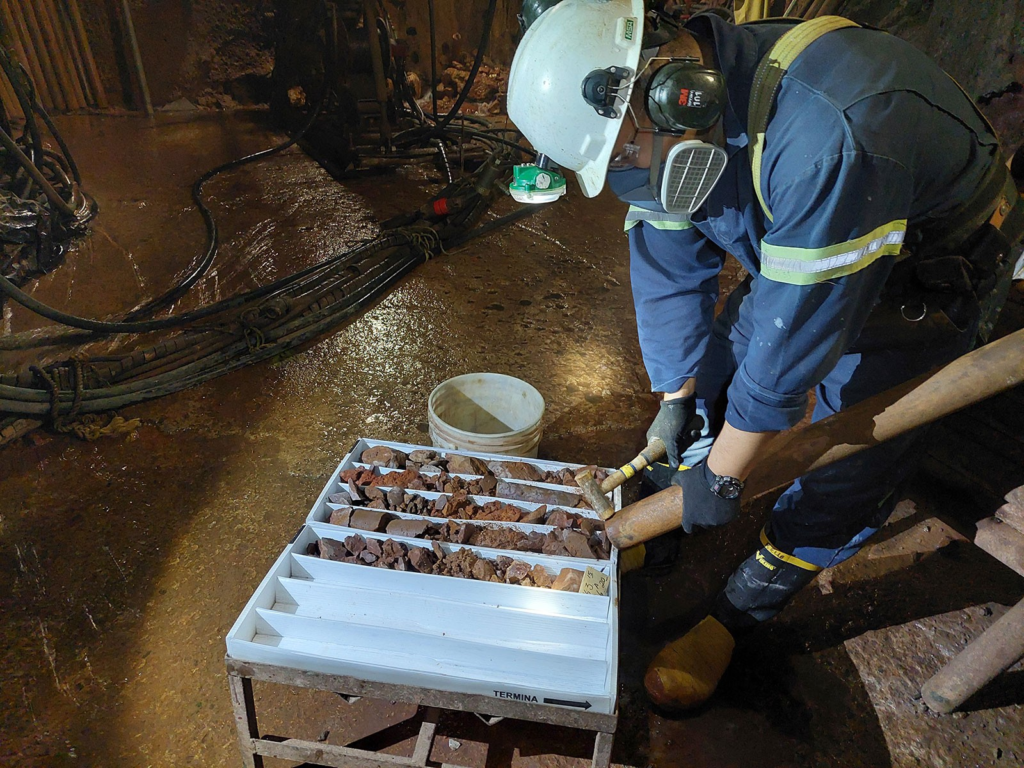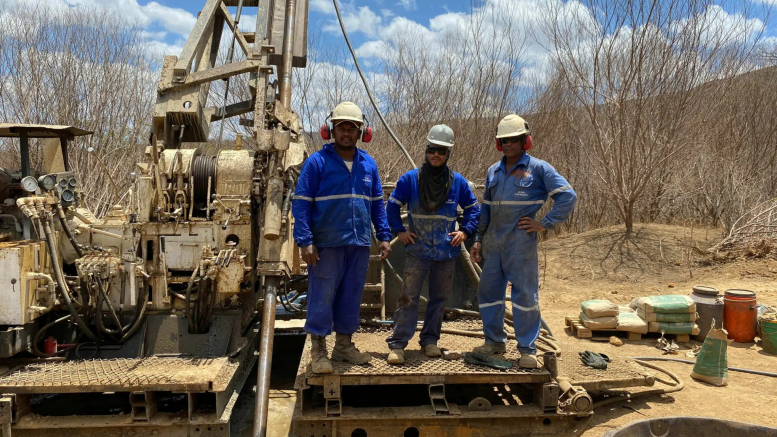Latin America is well-known for its long mining history and rich mineral endowment. In this first half of the Spotlight, we highlight four companies with exciting assets to watch.
Appia Rare Earths & Uranium
In Brazil, Appia Rare Earths & Uranium (CSE/CNX: API; US-OTC: APAAF) is focused on the PCH rare earths project in the central state of Goiás, about 216 km from state capital Goiânia. The company plans to earn a 70% stake in the 410-sq.-km ionic adsorption clay project by 2028.
PCH hosts two distinct styles of mineralization—ionic adsorption clay (IAC) and hard rock carbonatitic breccia. In March, the company released drill results including 150 metres grading 1.34% total rare earth oxide (TREO) and 0.13% niobium pentoxide (Nb2O5) from surface in hole PCH-DDH-002, including 10 metres of 4.11% TREO and 0.23% Nb2O5 from 37 metres and 6 metres of 3.94% TREO and 0.22% Nb2O5 from 144 metres. Hole PCH-DDH-003 cut 147 metres grading 2.00% TREO and 0.23% Nb2O5 from surface, including 31 metres of 3.60% TREO and 0.52% Nb2O5 from 3 metres.
Appia completed the first resource estimate for the project in March 2024, outlining 6.6 million indicated tonnes grading 2,513 parts per million (ppm) TREOs and 46.2 million inferred tonnes at 2,888 ppm TREOs.
The deposit contains significant concentrations of neodymium, praseodymium, dysprosium and terbium, which are the rare earth elements used in the production of permanent magnets. In addition, scandium and cobalt have been identified in the deposit’s Burita zone.
in February, Appia joined the newly created strategic research consortium dedicated to developing a Canadian rare earth supply chain. The initiative, also consisting of rare earths explorers Commerce Resources (TSXV: CCE; US-OTC: CMRZF), Defense Metals (TSXV: DEFN), and Vital Metals (ASX: VML; US-OTC: VTMXF), along with March Consulting Associates, is aimed at speeding up the formation of a Canadian rare earth elements industry.
And last November, Appia joined the Senai Magbras initiative, a project that aims to establish a complete and permanent rare earth production chain in Brazil. The pilot facility is in Lagoa Santa in the southeastern state of Minas Gerais.
The project is backed by private and public sector companies as well as the Federations of Industries of Santa Catarina, Minas Gerais, and the National Bank for Economic and Social Development.
Appia Rare Earths & Uranium has a market cap of about $16 million.
Atlas Lithium
Last October, Atlas Lithium (NASDAQ: ATLX) received the operational permit for its main Neves project in Brazil’s Minas Gerais state.
The project, situated in the Jequitinhonha River Valley, also known as Lithium Valley, is expected to initially produce up to 150,000 tonnes per year of battery-grade spodumene concentrate. It’s to be used in the manufacture of lithium-ion batteries.
The company hit another milestone in February when a cargo ship from Durban, South Africa docked at the Port of Santos, Brazil, bringing with it the company’s modular dense mediation separation (DMS) lithium processing plant.
The company has an offtake agreement with Japan’s Mitsui & Co. for 15,000 tons of lithium concentrate per year during the project’s first stage and 60,000 tons per year in the second. Mitsui acquired $30 million (C$43 million) of Atlas Lithium’s common shares in March 2024.
Atlas has also discovered spodumene-rich pegmatites at its Salinas project, about 97 km north of Neves and 8 km east of Pilbara Minerals’ (ASX: PLS) Colina lithium project. The company has completed soil geochemistry and LiDAR geological mapping and is undertaking further geophysical studies before kicking off a drill campaign.
In addition, geological mapping at Atlas’ Clear project has also discovered pegmatites. The project is about 6 km from Sigma Lithium’s (TSXV, NASDAQ: SGML) Grota do Cirilo hard rock mine.
Atlas also owns a 32% stake in Atlas Critical Minerals, a diversified mining company with rights in rare earths, copper, graphite, nickel, iron ore, gold and quartzite.
Altas Lithium has a market cap of about $85 million.
Bear Creek Mining
In early March, Bear Creek Mining (TSXV: BCM; US-OTC: BCEKF) initiated a strategic review that will look at options including a sale of all or some of its assets. That followed a working capital deficit (current assets minus current liabilities) of $93.2 million (C$133 million) that Bear Creek posted at the end of September.
Shareholders Sandstorm Gold Royalties (TSX: SSL; NYSE: SAND) and Equinox Gold (TSX, NYSE-A: EQX) support the review process, and Bear Creek’s board has set up a special committee of independent directors to manage the process. Bear Creek has appointed Christian Milau as a strategic adviser for the review. Milau was CEO of Equinox Gold (TSX, NYSE-A: EQX) from 2016 to 2022, leading that company through five mergers and acquisitions and growing it from a single-asset developer to one with eight operating mines.
Last year, the company’s Mercedes underground mine in Mexico’s Sonora state produced 40,220 oz. gold and 217,675 oz. silver. Bear Creek acquired Mercedes, about 250 km northeast of Hermosillo and 300 km south of Tucson, Ariz., in April 2022.
Mercedes hosts proven and probable reserves of 430,000 tonnes grading 3.95 grams gold per tonne and 22.7 grams silver for 54,300 oz. contained gold and 312,500 oz. silver.
This year the company plans to test near-mine brownfield targets identified late last year.

Last year, Bear Creek’s Mercedes underground mine in Mexico’s Sonora state produced 40,220 oz. gold and 217,675 oz. silver. Credit: Bear Creek Mining
In southern Peru, Bear Creek is working on a preliminary economic assessment (PEA) of its Corani silver-lead-zinc project, about 30 km from the town of Macusani. Corani is one of the world’s largest fully permitted development-stage silver deposits. The PEA will leverage work included in a 2019 feasibility study and will evaluate a 5,000-tonne-per-day oxide plant.
Bear Creek Mining has a market cap of about C$47 million.
Firetail Resources
In January Firetail Resources (ASX: FTL) was one of eight early-stage exploration companies selected from hundreds of applicants to participate in BHP Xplor’s 2025 program. BHP Explor, a unit of BHP (NYSE, LSE, ASX: BHP), helps promising explorers accelerate their critical minerals projects to further advance the energy transition.
BHP Xplor’s one-off, non-dilutive grant of up to $500,000 (C$715,000), along with strong technical support over a six-month period, will enhance Firetail’s exploration model for its Picha copper-silver project in southern Peru.
“Successful applicants for BHP Explor had to demonstrate not only that their critical minerals projects were highly prospective but also that they were committed to pushing industry boundaries in their geological concepts and data-gathering, testing and processing to realize the project,” Marley Palin, head of BHP Explor, stated in a release.
Firetail holds a 70% stake (and can earn an additional 10%) in Picha, a 222-sq.-km greenfield project that has seen little modern exploration. Firetail is generating multiple drill-ready targets at Picha through ground-based mapping and soil sampling.
Drill highlights at Picha include 5.12 metres grading 5.4% copper and 44.9 grams silver starting from 1.8 metres downhole in 24PCMD002 and 9.35 metres of 0.94% copper and 58.6 grams silver from 6.25 metres in drillhole 24PCCD0005.
Picha, about 17 km east of Compania de Minas Buenaventura’s (NYSE: BVN) San Gabriel gold-copper-silver project, is prospective for epithermal, stratabound, polymetallic carbonate replacement (CRD) and porphyry style copper mineralization with several untested significant surface geochemical and geophysical anomalies.
The company is also exploring its 60-sq.-km Charaque copper project, about 30 km northeast of Picha, where it is earning in with a Peruvian subsidiary of Barrick Gold (TSX: ABX; NYSE: GOLD).
Firetail Resources has a market cap of A$19.56 million (C$17.7 million).


Be the first to comment on "Spotlight: Latin America projects to watch"